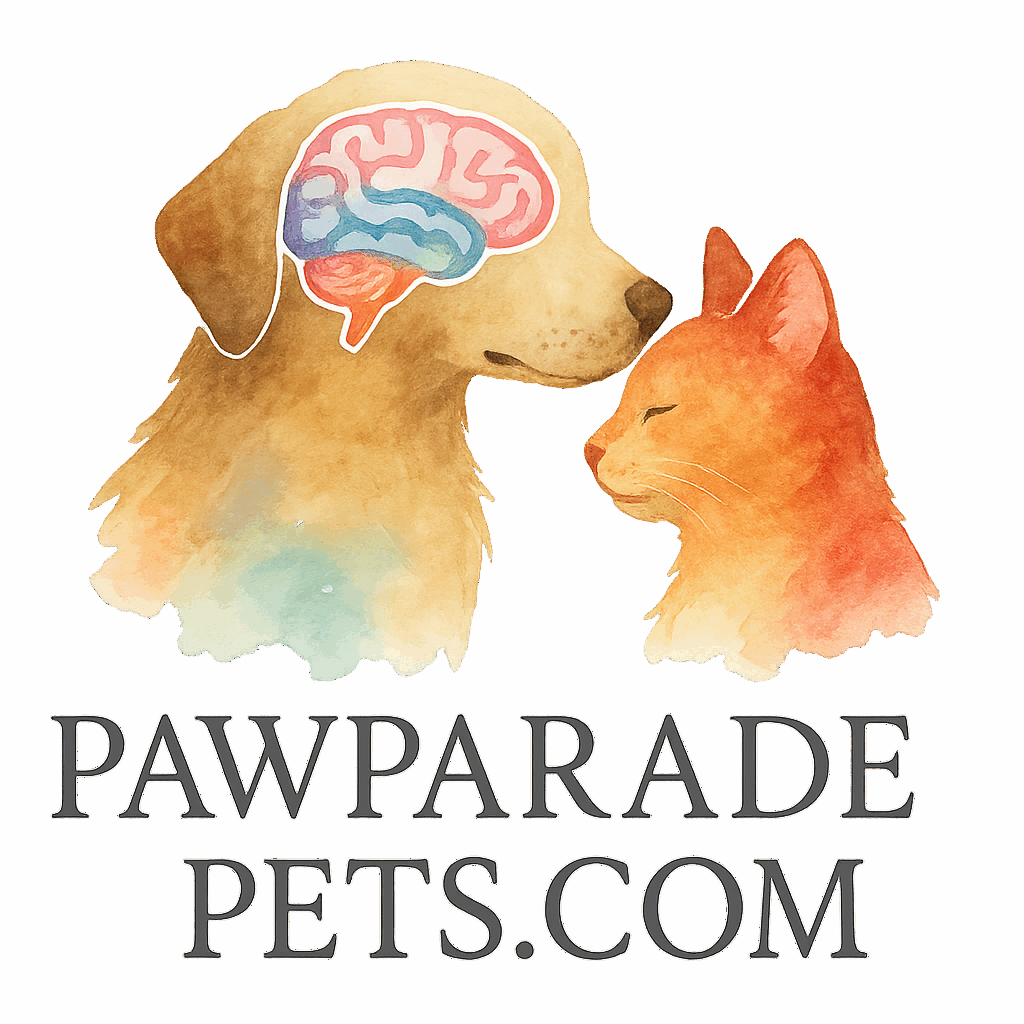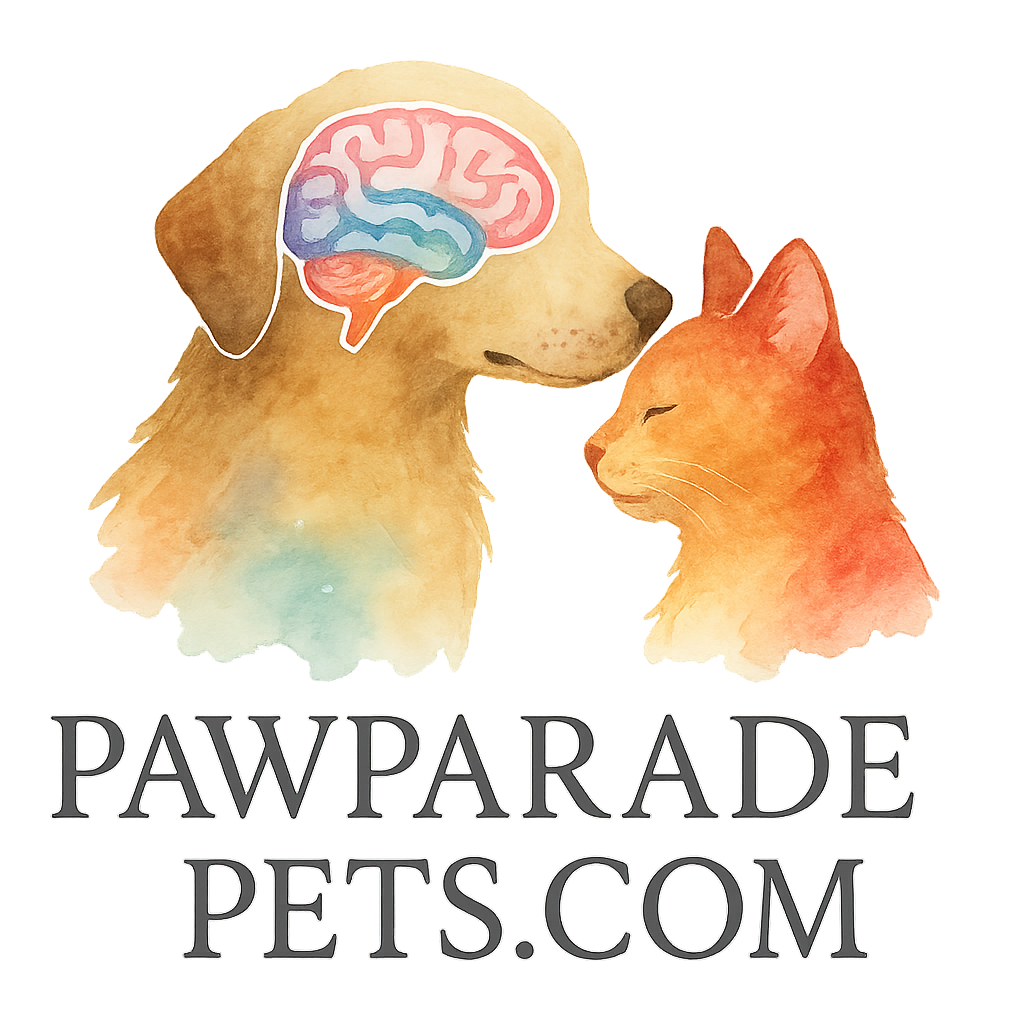Let’s face it—our pets are way smarter than we often give them credit for. From decoding our routines to solving toy puzzles faster than we expected, animals have some serious brainpower. But just like us, they need a little help to fine-tune their social smarts too. That’s where group activities for brain training step in.
In this post, we’re diving into seven awesome group activities that will sharpen your pet’s brain and boost their social skills—because yes, even pets need a bit of networking now and then.
Why Brain Training and Social Skills Matter for Pets
Understanding Pet Intelligence and Behavior
Ever noticed how your dog stares intensely at the treat jar or how your cat somehow always finds the coziest spot in the house? That’s not luck—that’s intelligence.
Just like humans, pets thrive on mental stimulation. According to Paw Parade Pets’ Brain Training Basics, training a pet’s brain doesn’t just improve their smarts—it improves their quality of life.
Socialization: The Key to a Balanced Pet
Socialization isn’t just for puppies and kittens—it’s a lifelong skill. It helps reduce anxiety, builds confidence, and makes pets more adaptable. Engaging them in group activities means they learn not just from humans but from their furry peers too.
Explore more about behavior and obedience here.
Benefits of Group Activities for Pet Brain Stimulation
Cognitive Growth Through Interaction
Brain stimulation is vital. When pets interact with others, they solve problems, learn boundaries, and enhance their memory. That’s what we call social smarts.
Want more advanced brain boosters? Check out these cognitive challenges.
Emotional and Behavioral Benefits
Group settings help pets manage excitement, practice patience, and reduce separation anxiety. They’ll learn when to be calm, when to engage, and how to “speak” pet-to-pet in a respectful way.
How to Choose the Right Group Activity for Your Pet
Factors to Consider: Breed, Age, and Temperament
A senior Shih Tzu may not love the same games as a hyper Border Collie. Choose activities that suit your pet’s breed energy, social comfort, and intelligence level.
For younger pets or beginners, start with the basics at Brain Training Basics.
Safety Tips for Group Engagement
- Always supervise
- Introduce new members slowly
- Use safe, pet-approved toys
- Maintain hydration and breaks
7 Group Activities to Boost Pets’ Brain Social Skills
Time to dive into the good stuff. These group activities are designed to stimulate your pet’s brain and improve their ability to engage, learn, and play with others.
1. Puzzle Toy Circles
Gather a few pets and place puzzle toys in a circle. Let them observe, learn, and mimic one another.
Mental Challenge + Peer Learning
This encourages problem-solving and interactive learning, helping pets understand toys faster by watching peers. Learn about more toys here.
2. Scent Work Hide-and-Seek
Hide treats or toys around a room or yard and let the group search together.
Great for Dogs and Cats Alike
Scent games enhance cognitive mapping and memory recall. These are ideal for dogs with high sniff drives or even curious kitties.
Explore scent-based games and activities for ideas.
3. Obedience Relay Races
Pets take turns completing command-based tasks in a relay style.
Learning Commands in Groups
This strengthens command recall, encourages team participation, and boosts overall discipline. Reinforce your techniques with behavior and obedience.
Also explore tags like obedience and commands.

4. Team Agility Courses
Think mini obstacle courses—tunnels, ramps, weave poles.
Physical Fun Meets Mental Challenge
Agility isn’t just physical; it takes brainpower to strategize paths. Doing it in groups enhances social engagement and confidence.
Want more fun and energetic ideas? Visit fun and activities.
5. Training Circles with Rotating Commands
Owners form a circle and give commands to pets one at a time. Then switch pets clockwise.
Group Discipline and Focus
This introduces variability, improves listening skills, and sharpens focus in group settings. It’s discipline wrapped in fun.
Perfect for curious minds tagged under training.
6. Social Playdates with Brainy Games
Schedule a playdate with other pets and include interactive toys, treat puzzles, or fetch-with-rules.
Blending Fun with Training
It’s low pressure and loads of fun, but with brainy benefits. Interactive play keeps pets smart and social.
Browse more smart ideas here.
7. Enrichment Hubs with Interactive Toys
Create a dedicated area filled with gadgets, snuffle mats, feeders, and rotating toys.
Mixing Gadgets, Games, and Social Learning
Pets take turns or explore together. Think of it as a pet brain gym.
Explore gadgets and tech here, tech, and top-tier toys.
Tools and Toys That Enhance Group Brain Training
Smart Devices and Interactive Tech
From treat-dispensing cameras to AI puzzle boards, technology makes training more dynamic.
Check out the best tools and toys that spark intelligence and fun.
Top Picks for Group Use
- Snuffle mats (for scent games)
- Tug toys (for shared play)
- Puzzle balls (for competition and collaboration)
Explore more devices.
Mistakes to Avoid in Group Brain Training
Overcrowding or Mismatching Pets
Too many pets or incompatible temperaments can lead to stress or fights. Always match energy levels and social behaviors.
Inconsistent Commands or Poor Supervision
Mixed signals = confused pets. Keep rules consistent across the group. One unclear command can derail the session!
Conclusion
There’s no doubt about it—group activities supercharge your pet’s brain and social skills like nothing else. Whether it’s a relay race, a hide-and-seek mission, or a puzzle showdown, these interactions do wonders for emotional and cognitive growth.
Plus, they’re fun—for you and your furry buddy.
With a little creativity, the right tools, and a group of wagging tails or curious whiskers, you’ll have a smarter, happier, more social pet in no time.
Want more inspiration? Explore the world of brain training, brain stimulation, and problem-solving ideas at Paw Parade Pets.
FAQs
1. What age can pets start group brain training activities?
Most pets can start around 10-12 weeks old, depending on vaccinations. Always begin slow and keep sessions short for young ones.
2. Are group activities good for shy or anxious pets?
Yes! With proper introduction and calm settings, group activities can gently build confidence over time.
3. How often should I do group brain activities with my pet?
1–3 times a week is great for most pets. The key is consistency and keeping it enjoyable.
4. What if my pet doesn’t get along with others?
No worries! Try parallel play, smaller groups, or work with a trainer to ease into socialization.
5. Can cats benefit from these group brain training activities too?
Absolutely. Cats love puzzles, scent games, and interactive play. Just cater to their pace and personality.
6. How do I know if my pet is overstimulated?
Look for signs like yawning, pacing, hiding, or ignoring commands. Always give breaks and watch their body language.
7. What toys are best for group activities?
Go for durable, multi-use toys like puzzle feeders, tug ropes, and scent mats. See our favorite picks at tools and toys for brain training.


